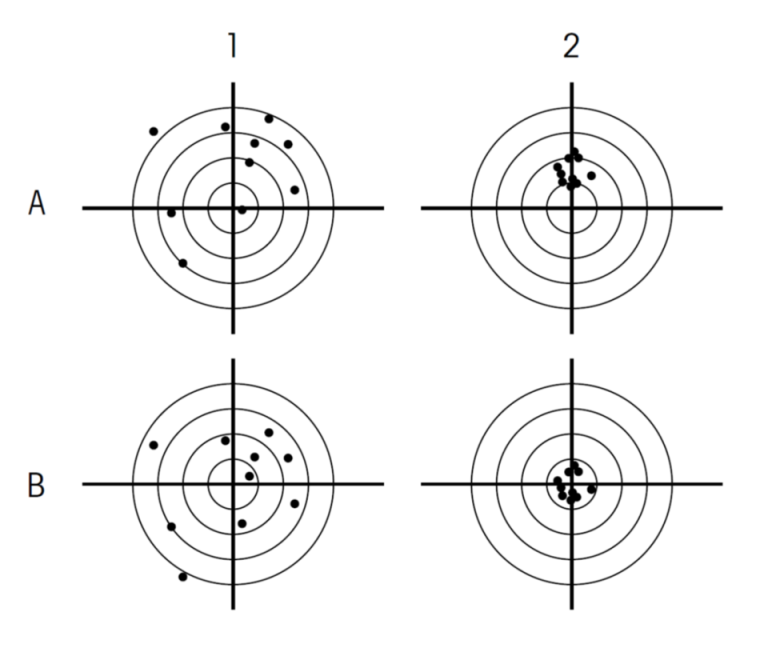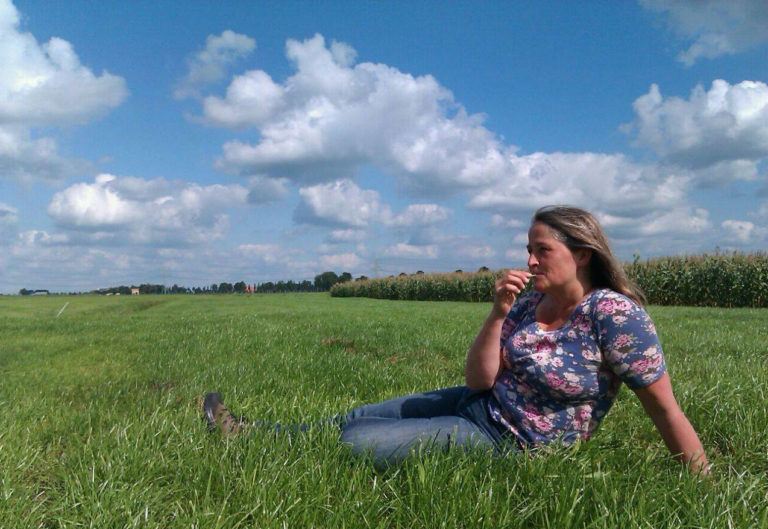News
French Anses experts : GMO deregulation has « no scientific basis »
French experts from the Agence nationale de sécurité sanitaire de l’alimentation, de l’environnement et du travail (Anses) are highly critical of the scientific criteria proposed by the European Commission to deregulate GMOs. In their report, published on December 21, 2023, they state that the basic assumption linking equivalence and absence of risk has « no scientific basis ». The same applies to the criteria proposed by the Commission to declare a GMO/NTG plant equivalent to a conventional plant.

Since September 2023, Member States and MEPs have been discussing the GMO deregulation proposal presented by the European Commission (EC) on July 5, point by point. In these discussions, the scientific basis of the proposed rules should be one of the points of attention. On this subject, the report by French experts of the Anses (in english), published in December 2023, is likely to fuel discussions in 20241. Regretting the lack of clarity in many terms, and even the absence of definitions (see box), the experts noted « certain scientific and health limitations in the construction of the criteria » proposed to deregulate GMOs.
Equivalence between plants, equivalence of risks ?
For the European Commission, if two plants are « equivalent », then so are the risks they present, and their regulatory framework should therefore be the same. It states that new techniques of genetic modification (called new genomic techniques, NTG) « can result in organisms with modifications equivalent to what can be obtained by conventional breeding methods »2. The European Commission therefore asserts that NTG plants that could also occur naturally or be produced by conventional breeding techniques « and their progeny […] should be treated as plants that have occurred naturally or have been produced by conventional breeding techniques, given that they are equivalent and that their risks are comparable, thereby derogating in full from the Union GMO legislation »3.
This assumption, based on the conditional « could », is the keystone of the deregulation proposed by the European Commission. But for the experts at Anses, there is « no scientific justification [for declaring that] categories of plants that would be equivalent in type, size and number of genetic variations or modifications would be equivalent in type of traits and level of risk ». The European Commission’s main shortcoming is that it ignores « thousands of years of evolution, drift or natural selection » by asserting that genetically modified plants in the state of cells isolated on a laboratory bench are equivalent to plants selected naturally or by conventional methods on the sole basis of the number, size or type of genetic modifications carried out. The French experts believe that a comparison of « possible consequences on a biological function » should be made, i.e. that a risk assessment should not be put aside.
Following this logic, they add that ignoring, as proposed by the EC, « unintended genetic modifications potentially located outside the targeted sites and similar sequences (apart from transgenic elements) is not justified ». An ignorance that could pose a problem, as such off-target modifications can be « insertions/deletions, reading frame shifts or any type of structural variations » with associated consequences. Should the proposed regulation be read in this way, it would be no more justified to count such effects among the claimed genetic modifications « without considering their possible negative effects ».
Scientifically unjustified criteria
While they would prefer to see a study of the new biological functions obtained, the French experts see little scientific logic in the criteria proposed by the European Commission to declare a plant and its progeny equivalent to a conventional plant, and therefore « NGT category 1 »4. Such plants would be exempt from risk assessment, labelling, traceability and post-marketing monitoring5.
Thus, the type 1 criterion proposed by the Commission, i.e. a « substitution or insertion of up to 20 nucleotides » is not the subject of any « scientific justification for accepting (in the sense of equivalence) substitutions or insertions on the basis of their size. Furthermore, the maximum threshold of 20 nucleotides for an insertion or substitution has not been shown to be particularly relevant for the definition of equivalence to conventional plants ».
Type 2 criterion, concerning « deletions of any number of nucleotides », does not appear to be more justififed, since « regardless of their size, the functional consequences of these deletions should be characterized ».
The very complex type 3 criterion is also the subject of comment. It covers cisgenesis, with « targeted insertion of a contiguous DNA sequence existing in the breeder’s gene pool » and « targeted substitution of an endogenous DNA sequence with a contiguous DNA sequence existing in the breeder’s gene pool ». In the case of cisgene insertions (cisgenesis), French experts consider that the NTG plant obtained can only be deemed equivalent to a conventional plant if the inserted sequence is positioned in the recipient plant at the same site as the one from which it originated in the donor plant (known as an orthologous site).
For criterion type 4, i.e. « targeted inversion of a sequence of any number of nucleotides », the experts simply state that « this inversion criterion without size conditions does not seem justified ».
Finally, criterion type 5, which looks at « any other targeted modification of any size, on the condition that the resulting DNA sequences already occur (…) in a species from the breeders’ gene pool », seems to carry a lack of clarity and opens the door to possible deregulation of intragenic plants6. However, they believe that « a criterion leading to intragenic plants being exempted from the requirements of GMO legislation would not be justifiable ».
Experts not consulted by politicians
Apart from their opinion, it is striking to note that the French experts took the matter into their own hands. In other words, the French government, which only consulted them on the Commission’s preliminary draft, did not ask for their opinion on the criteria proposed by the European Commission, which were not included in the preliminary draft. This is quite a surprise from the French government, which has always claimed that decisions concerning GMOs should be based on science.
The French government’s decision not to consult scientific experts is not original. The European Commission itself did not consult its experts at the European Food Safety Authority (EFSA) on the criteria it proposed for declaring plants equivalent. As the EFSA press service informed us, « The criteria proposed by the European Commission specifically for its proposal for NGT Cat 1 were developed by the EC itself ». It may well have based it on a 2022 EFSA opinion on the assessment of risks associated with the use of genetically modified plants through new techniques, as both EFSA and the European Commission have informed us. However, there has been no consultation of European experts on the criteria finally adopted and proposed by the European Commission.
The European Commission’s press service has confirmed to Inf’OGM that it has asked the EFSA for its opinion on criteria for a risk assessment. Paradoxically, as Inf’OGM detailed in another article, the conclusions of this opinion will ultimately be ignored by the European Commission since, unlike EFSA, the Commission will propose that no risk assessment be carried out7.
What is the origin of the criteria established by the European Commission ? Perhaps it lies in the latest source of information the Commission has indicated to Inf’OGM, namely that « The Commission also collected and considered evidence and views provided by a large range of stakeholders and experts in preparation of the impact assessment ».
The year 2024 will see the continuation of the discussions begun in 2023 within the Council of Ministers and the European Parliament on the European Commission’s proposal. After negotiations between these political bodies and the European Commission, in what is known as a trilogue, a new legislation to deregulate GMOs may or may not be adopted. Indeed, the final decision on deregulation belongs to the European legislator. However, should this be the case, it will no longer be possible to claim that such a decision is based on « good science », so often invoked by governments and the European Commission.
Vague or undefined terms
The experts felt that several scientific terms used in the legal text proposed by the European Commission are unclear. Such is the case of the « breeders’ genetic pool », which is, in their view, an expression lacking clarity. Similarly, they point out that in French, the expression used for type 3 genetic modifications and referring to the insertion of « contiguous DNA sequence » is not unambiguous. As they detail, « two objects, such as two nucleotides, can be contiguous, but one object cannot be contiguous alone ». Generously, they therefore felt that the European Commission meant « continuous DNA sequence »…
Certain definitions are also missing. For example, the expression « conventional plants » is not defined by the European Commission. A troublesome point according to the experts, since the Commission proposes to classify GMO/NTG plants « on the basis of a comparison with ’conventional plants’, it appears to the WG [Working Group] quite necessary that they be explicitly defined ».
Similarly, the experts write that a precise definition of the term « targeted site », used on several occasions, should be provided so that the nature of the sequences considered as target sites is clear to everyone. Failing this, the experts « warn of a risk of distortion between files, linked to the interpretation of each applicant ».
- Anses, « Plantes NTG : analyse des critères d’inclusion dans la catégorie 1 proposés par la Commission européenne », 21 décembre 2023. ↩︎
- Considérant 2 de la proposition de règlement présenté par la Commission européenne le 5 juillet 2023. ↩︎
- Considérant 14 de la proposition de règlement présenté par la Commission européenne le 5 juillet 2023. ↩︎
- Pour l’opinion des experts de l’Anses critère par critère, voir note 1, de la page 18 à 24. ↩︎
- Annexe 1 de la proposition de règlement présenté par la Commission européenne le 5 juillet 2023. ↩︎
- La Commission définit l’intragénèse comme « sous-ensemble de la cisgenèse qui consiste à insérer dans le génome une copie réarrangée du matériel génétique composé de deux ou plusieurs séquences d’ADN déjà présentes dans le pool génétique des obtenteurs ».
Considérant 2 de la proposition de règlement présenté par la Commission européenne le 5 juillet 2023. ↩︎ - Eric MEUNIER, « OGM : la Commission ignore ses experts pour rassurer les industries », Inf’OGM, 24 octobre 2023. ↩︎











